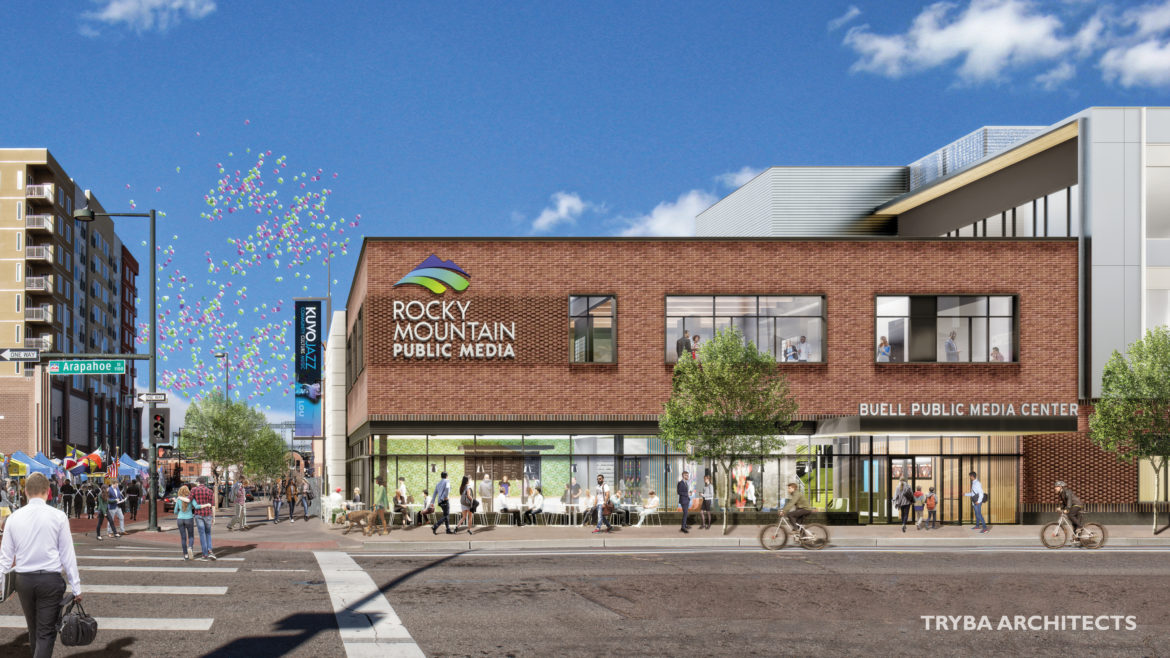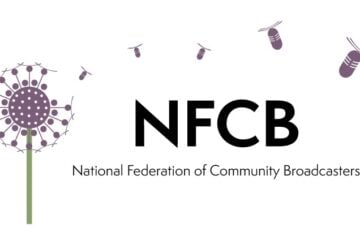With new building, Rocky Mountain Public Media aims to become a center for community, pubcasters and news outlets

Tryba Architects
A rendering of the Buell Public Media Center.
As other local media in Denver are cutting staff, Rocky Mountain Public Media is in the midst of a capital campaign and expects to break ground on a new headquarters in August.
The Denver-based statewide radio and TV network has raised 75 percent of its $30 million goal, including $14 million over the last year.
“This capital campaign, this project, has really opened our eyes to how much more we could be doing to serve the community, and how open the community is to us playing a bigger role,” said RMPM President Amanda Mountain.
Community members who visit the Buell Public Media Center will be able to reserve TV and radio studios and check out video equipment. RMPM will distribute content created by community members in partnership with Denver’s public access TV channel and will feature highlights on its digital and broadcast platforms.
The 63,000–square-foot facility, which RMPM hopes to open in the first quarter of 2020, will also include a flex-space black box broadcast studio, a community event space and a music performance studio. RMPM’s building now has a concrete facade; the new headquarters will be partly enclosed by glass to create a feeling of engagement and accessibility, Mountain said.
The new building will occupy a vacant lot once home to a dilapidated building that has been demolished. In a swap with the Colorado Land Board, RMPM exchanged the land occupied by its current offices for roughly two-thirds of a city block in a downtown neighborhood.
RMPM also plans to facilitate collaboration among the state’s public radio and TV broadcasters by offering shared office and studio space. “We feel we have an obligation and responsibility to make sure this facility is accessible to all 18 of them,” Mountain said.

Mountain
Commercial media outlets in Denver may also use the space. The Associated Press has expressed interest in the Buell Center’s offices, Mountain said, and RMPM is continuing to recruit other media to occupy the building.
Local media outlets have recently weathered deep cuts and layoffs. The Denver Post announced another round of layoffs last week, amounting to a third of its newsroom. “Commercial media counterparts are turning to public media as a valuable partner to help in this new environment where resources aren’t as available as they used to be,” Mountain said.
An anonymous donor also provided $1 million for digital distribution technology that will enable RMPM to more easily share content among the Denver headquarters and RMPM’s five other facilities in the state.
Clear vision yields big gifts
The center takes its name from the Buell Foundation, a Denver funder focused on children and youth that gave $6 million early in the capital campaign. When RMPM received the foundation’s gift, “we knew this was a viable project,” said campaign co-chair Mary Sissel, a former RMPM board member. “They had been convinced. It was the largest grant they had made. So for the next year or so, the vision was really fine-tuned and brought into perspective.”
After securing the lead gift, RMPM assembled a campaign cabinet of ambassadors for the project who have advocated for the importance of public media in the community, Mountain said. Members include past board members, longtime supporters and others relatively new to RMPM, Mountain said.
 “Not everybody feels comfortable asking for money, nor should they have to,” Mountain said. “At the end of the day, that’s really staff’s job to ask for money. Volunteers help us meet new people so we can tell our story.”
“Not everybody feels comfortable asking for money, nor should they have to,” Mountain said. “At the end of the day, that’s really staff’s job to ask for money. Volunteers help us meet new people so we can tell our story.”
The campaign is in its quiet phase. Campaigns typically enter a public phase when they reach a majority of their goal, sometimes as much as 70 percent. But RMPM may not ask viewers and listeners to contribute until it has reached the goal or come close to it to ensure that it can complete the campaign. With the average RMPM donor giving $140 a year, most can’t match the larger gifts RMPM is seeking from major donors, Sissell said.
When making the pitch to donors, Sissel said she focuses on programming, not the new building. “The clearer the vision, the more ready those with capacity are willing to sign on,” Sissel said.
Capital campaigns can help stations clarify their story and goals. “It’s given us a whole new level of visibility in the community,” Mountain said. “It’s allowed us to tell our story in a public way.”






